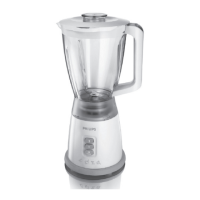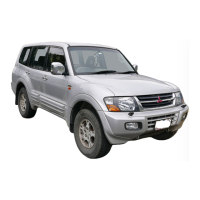20-18 Chapter 2 Part D General engine overhaul procedures
13.1 Checking crankshaft endpiay with a dial indicator
13.4a Use a center punch or number stamping dies to mark the
main bearing caps to ensure instaiiatiun in their original locations
on the block (make the punch marks near one of the bolt heads)
7 Remove the bearing insert and push the connecting rod/piston as-
sembly out through the top of the engine. Use a wooden or plastic hammer
handle to push on the upper bearing surface in the connecting rod. If resis-
tance is felt, double-check to make sure all of the ridge was removed from
the cylinder.
8 Repeat the procedure for the remaining cylinders.
9 After removal, reassemble the connecting rod caps and bearing in-
serts in their respective connecting rods and install the cap nuts finger
tight. Leaving the old bearing inserts in place until reassembly will help
prevent the connecting rod bearing surfaces from being accidentally
nicked or gouged.
IO Don’t separate the pistons from the connecting rods (see Section 17
for additional information).
13 Crankshaft - removal
Refer to illustrations 13.1, 13.3, 13.4a, 13.4b and 13.4~
Note: The crankshaft can be removed only after the engine has been re-
moved from the vehicle. It’s assumed the flywheel or driveplate, crank-
shaft balancer/vibration damper, timing chain or belt, oilpan, oil pump and
piston/connecting rod assemblies have already been removed. The rear
main oilseal housing must be unbolted and separated from the block be-
fore proceeding with crankshaft removal.
13.3 Checking crankshaft endpiay with a feeler gauge
13.4b The main bearing cap numerals (arrows) are easily visible
on the 2.4L engine
FRONT OF ENGINE
13.4~ The main bearing caps on the 2.6L have arrows
that point to the front of the engine
1 Before the crankshaft IS removed, check the endplay. Mount a diai in-
dicator with the stem in line with the crankshaft and touching one of the
crank throws (see illustration).
2 Push the crankshaft all the way to the rear and zero the dial indicator.
Next, pry the crankshaft to the front as far as possible and check the read-
ing on the dial indicator. The distance it moves is the endplay. If it’s greater
than specifted in this Chapter, check the crankshaft thrust surfaces for
wear. If no wear is evident, new main bearings should correct the endplay.
3 If a dial indicator isn’t available, feeler gauges can be used. Gently pry
or push the crankshaft all the way to the front of the engine. Slip feeler
gauges between the crankshaft and the front face of the thrust main bear-
ing to determine the clearance (see illustration).

